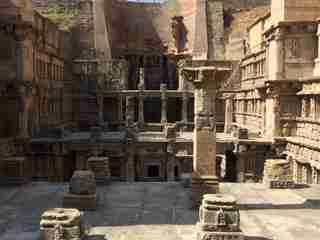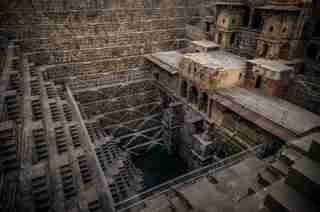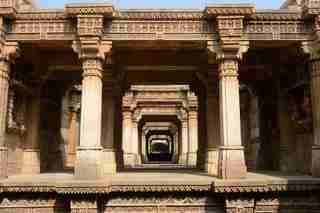The massive subterranean structures known as stepwells first appeared in India as early as the third century. For hundreds of years, these sprawling wonders of architecture and engineering provided communities with water for bathing, drinking, washing, and irrigation. Not ideal destinations for those with a fear of heights, stepwells descend several stories into the earth to connect to the water table. From there, a labyrinth of stairs leads back up to ground level. Many of these grand constructions also functioned as Hindu temples and were ornamented with pavilions, archways, stone sculptures of deities, and columns. Sinking water tables and the modernization of the country, however, resulted in the neglect and abandonment of most stepwells. Many crumbled into ruin, were filled with garbage, or were destroyed after becoming unsafe and unhygienic. Today only a fraction of India’s stepwells remain, each offering a window into history that is both eerie and whimsical. We’ve gathered six awe-inspiring examples below.

A UNESCO World Heritage site, Rani ki Vav was erected as a memorial to a king in the 11th century in the fortified town of Patan. The stepwell resembles an inverted temple and is home to more than 1,500 sculptures.

Chand Baori, one of the largest stepwells in the world, was built more than a thousand years ago in the village of Abhaneri in Rajasthan.

Adalaj Stepwell is a prime example of Indo-Islamic architecture. Built in 1499 by Queen Rudabai, the structure plunges five stories below the ground in the village of Adalaj.
Designated a protected monument by the Archaeological Survey of India, Agrasen ki Baoli —unusually situated in the modern city of New Delhi—is identifiable by its 103 red stone steps.
Rajon ki Baoli, a three-story stepwell believed to have been built by Daulat Khan during the reign of Sikandar Lodi in 1516, is located near 16th-century general Adham Khan’s tomb in Mehrauli, Delhi.
Named after the sulfuric smell of the water it held, the Gandhak Baoli was built during the reign of Emperor Iltutmish. The 13th-century site is one of Delhi’s largest stepwells at five stories deep, and it is still in use today.









